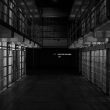Solar technology has come a long way in the last few centuries, but the basics remain the same. To get the most energy out of your panels, they must be positioned and facing in the correct direction. It would be best to get things sorted to ensure you get all the potential of your home solar installation.
But how do you get your solar installation optimized? What is the optimal solar panel direction and angle? That’s what we’re going to cover below.
Once you know these basics, you can plan your setup and gain even more energy. Read on.
What Is Solar Panel Direction?
Solar panel orientation is an important factor to consider in solar installation. The direction of the solar panels affects the amount of power that will be generated by the panels. When installing solar panels, one must ensure that they are facing the correct direction.
This direction can maximize their energy generation, with the optimal direction being south facing in the northern hemisphere or north facing in the southern hemisphere. An east- or west-facing orientation may reduce energy efficiency. While a north-facing orientation can be ineffective in the northern hemisphere zone.
Solar panel direction is an important factor in a solar installation. It should be rightly done for optimal energy generation.
What is Solar Panel Angle?
Solar panel angle is an essential factor in installing your solar panels. A panel with the correct inclination angle will be more efficient and generate more electricity than one without. The solar panel angle should depend on your geographic location and time of year.
The calculation of the most significant angle is by measuring the latitude and the time of year you plan to install the solar panels. Additionally, your roof or land area may affect the optimal angle of your system. The best way to find the most significant angle for solar panel setup is to consult a trained solar professional.
They will be able to determine the best angle for your system, helping you get the most from your investment. Once you angle the panels, you can maximize their efficiency and generate more electricity.
Angle or Direction: Which Is More Important?
When it comes to angle or direction, which is more important, it depends on the situation. Generally, the direction is more critical because it indicates the overall goal, while the angle denotes how this goal will be achieved. Direction is the key to successful navigation.
Going in the right direction ensures that the goal is reached efficiently. But going in the wrong direction leads to distractions, wrong turns, and wasted effort. Angle is vital in decreasing positional or directional ambiguities.
It provides the context for a situation so that decisions can be made in the correct direction. That said, there are situations where the angle is more important than the direction, and vice versa. Only through careful consideration of the context can one understand which is more important in a given situation.
Why Are Solar Panels Oriented North?
When it comes to solar power, most people know that having the right direction and angle of the solar panels is integral to harnessing and using the most sunshine available. North is the ideal direction for solar panel orientation, as it captures the most sunlight in a day. The angle, or tilt, of the sun, needs to be at the correct angle for your location for the most excellent energy production.
Such an angle is usually equal to the exact latitude of your site. Knowing the optimal direction and angle to install solar panels is essential for efficient solar energy use and production. Proper orientation and tilt of the solar panels can increase efficiency and output, leading to more savings in the long run.
Can Solar Panels Face East or West?
Yes, installing solar panels facing either east or west is possible. The most crucial factor to consider when determining the direction and angle of the panels is the amount of sunlight they receive. A general rule of thumb is that east-facing panels will receive the most sunlight.
Therefore, in an east-facing installation, the orientation of the panels should be as close to the south as possible. But, with a west-facing structure, the direction of the panels should be as close to the north as possible. Additionally, it’s essential to clean the solar panels and ensure they’re placed in a shaded area, as too much heat or too little sunlight can reduce efficiency.
How Do You Know Which Angle Is Best for Solar Panels?
The best angle for solar panels depends on where you live and the season. Generally speaking, south-facing solar panels are most effective when placed at an angle equal to your latitude. At this angle, they receive the most direct sunlight throughout the year.
But if you live in an area with a lot of sunshine during the winter, tilt your solar panels more to capture more sunlight and less during the summer, when the sun is less intense.
Then, with some trial and error, you can experiment to find the best angle for your solar panels. As always, it’s essential to take professional advice if you’re unsure and ensure your solar panels follow local building codes before installation.
What Are the Other Influences on Solar Panel Angle?
Solar panel angle is a significant factor in the energy output of a solar panel. Getting the panel’s angle right is vital to maximizing energy efficiency. Yet, other influences can play a role in the effectiveness of the panel.
The climate and geographical location of the area can also have an impact. For instance, the sun will generally be more direct in a hot desert area. Then the optimal panel angle will be greater than in areas with more diffuse sunlight.
Also, shadows from surrounding mountains, buildings, and trees can influence the ideal angle for a solar panel. When shadows are cast onto the solar panel, it has the effect of reducing the energy production of the solar panel.
Finally, the season can also be an essential factor, as, in the winter, the solar angle will be lower due to the shorter days and the Sun being in a lower position in the sky, which would need a change in the angle to compensate.
Is It Possible To Lay Solar Panels Flat?
Yes, it is possible to lay solar panels flat. The process is called a flat roof solar installation. This is becoming an increasingly popular method for harnessing the power of the sun.
It is also less expensive and more efficient than installing panels on a pitched roof. Despite the need for a few special components, such as extra support and frames, flat roof solar installations can be done quickly and easily if done right. It is important to use a highly experienced and qualified professional to ensure that the process is done correctly and safely.
For a solar project to be successful, you may want to check out Blue Raven Solar’s services, which offer comprehensive warranties and have an extensive installation process.
Also, this installation allows homeowners to enjoy improved efficiency and cost savings due to the wide surface area of the solar panels. With the right installer, flat roof solar installations can be completed on time and provide homeowners with clean and affordable energy.
Solar Panel Tracking Systems
Solar panel tracking systems can be a very beneficial and cost-effective way to maximize the potential of solar energy in a given area. The design of these systems is to install the solar panels in the most optimal direction and angle to capture the most sunlight and generate the largest amount of energy.
This optimal direction and angle are essential for achieving the greatest efficiency, as any deviation from the ideal angle or direction could result in significant energy production losses.
Installing the system correctly and ensuring it continues to track the sun throughout the year can also reduce maintenance costs and extend the lifespan of the array.
The tracking system design should adjust the angle and direction using some form of solar panel tilt or rotation mechanism. In most cases, this can be motorized, using digital controls to adjust the angle and direction to face the sun as it moves throughout the day.
Doing this right can give you the most significant amount of energy production, cost, and longevity for your solar panel mounting.
Solar Panel Direction and Angle
Installing solar panel direction and angle correctly is essential to ensuring excellent energy production. Consider the system’s direction, tilt angle, and seasonality to ensure a successful solar project.
Look no further than your local solar contractor for professional and cost-effective solar installation services. Make the switch to solar energy today and start saving on energy costs.






